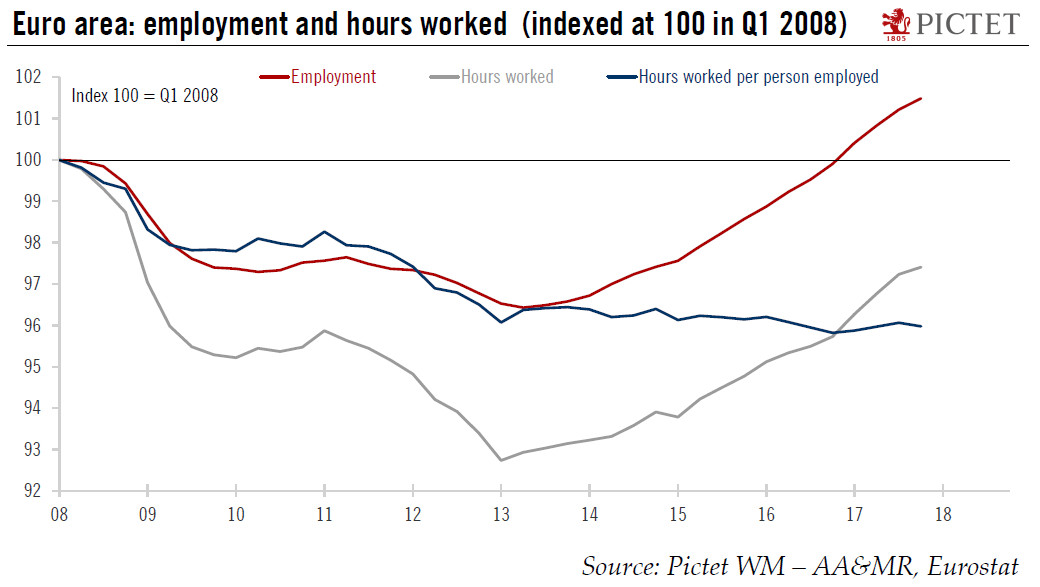Average number of hours worked per employee suggests there is still slack in the euro area job market.Euro area employment grew for the 18th consecutive quarter in Q4 2017 (+0.3% q-o-q), and is now 1.5% above its pre-crisis (2008) level. By contrast, hours worked per person employed decreased during the same period, remaining 4% below their pre-crisis level.The two data series have followed divergent trends since the start of the economic recovery. Between Q1 2008 and Q2 2013, the total amount of labour input used by firms decreased massively. The fall was more significant in terms of total hours worked than in terms of headcount. Underlying these developments was a fall in average hours worked per person, which then remained broadly stable during the recovery (see chart below). To a
Topics:
Frederik Ducrozet and Nadia Gharbi considers the following as important: Macroview
This could be interesting, too:
Cesar Perez Ruiz writes Weekly View – Big Splits
Cesar Perez Ruiz writes Weekly View – Central Bank Halloween
Cesar Perez Ruiz writes Weekly View – Widening bottlenecks
Cesar Perez Ruiz writes Weekly View – Debt ceiling deadline postponed
Average number of hours worked per employee suggests there is still slack in the euro area job market.

Euro area employment grew for the 18th consecutive quarter in Q4 2017 (+0.3% q-o-q), and is now 1.5% above its pre-crisis (2008) level. By contrast, hours worked per person employed decreased during the same period, remaining 4% below their pre-crisis level.
The two data series have followed divergent trends since the start of the economic recovery. Between Q1 2008 and Q2 2013, the total amount of labour input used by firms decreased massively. The fall was more significant in terms of total hours worked than in terms of headcount. Underlying these developments was a fall in average hours worked per person, which then remained broadly stable during the recovery (see chart below). To a large extent, steady hours worked per employee is the result of an increase in part-time employment. Some workers may have chosen to work part-time, but many workers may also have involuntarily accepted part-time employment. There are currently more than 6.6 million underemployed part-time workers in the euro area, one million more than before the crisis, which helps explain subdued inflation dynamics.
In his seminal ‘Scars or scratches?’ speech last year, ECB Executive Board member Benoît Coeuré stressed the importance of structural adjustments in the labour market, and suggested we pay attention to the “intensive margin”, which shows when hours worked increase to the point where discouraged workers start to be reabsorbed. The latest data suggest that we have not reached this tipping point, adding to the case for prudent monetary policy normalisation.
